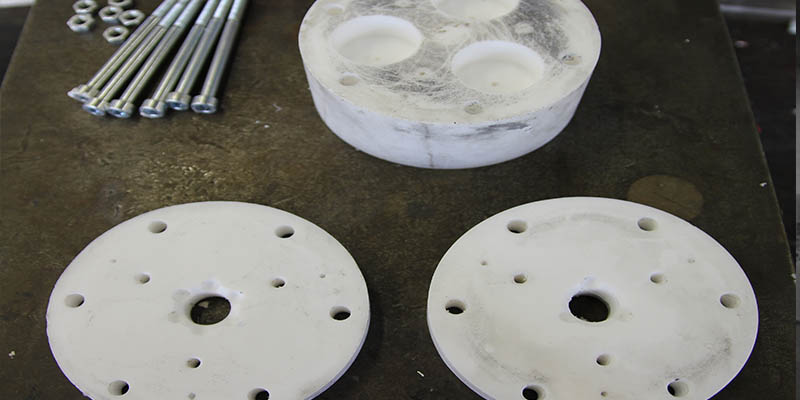Downloads
DOI:
https://doi.org/10.7480/jfde.2014.1-2.883Abstract
The recent demand for architectural transparency has drastically increased the use of glass material for structural purpose. However, connections between structural glass members represent one of the most critical aspects of glass engineering, due to the fragile behaviour of this material. In that respect, research activities on adhesive point-fixings are currently on-going. The mechanical behaviour of adhesive point-fixings is affected by large nonlinearities, which are usually investigated by nonlinear Finite Element Analysis (FEA). This paper focuses on the geometrical and the material nonlinearities of adhesive point-fixings for glass structures. Firstly, the nonlinear material behaviour of two selected adhesives are investigated by means of uniaxial tension and compression tests on the bulk material. The production of specimens, test methodology and displacement rate dependency are discussed. Secondly, the nonlinear stress distribution occurring in the adhesive and the joint stiffness is investigated by means of nonlinear FEA. The effects of several parameters on the mechanical behaviour of adhesive point-fixings, such as the connection dimensions and adhesive elastic properties, are studied. The adhesive stress-strain curves resulting from the experimental campaign show that the adhesives exhibit a large nonlinear behaviour. The results show that the stress and strain at failure reduce as the displacement rate is reduced. From the numerical investigations it is concluded that large nonlinearity involves the mechanical behaviour of adhesive point-fixing which cannot be neglected. The stress distribution within the adhesive deviates from uniform nominal stresses, even in case of simple load condition, with stress peaks up to four times higher than nominal stresses.
How to Cite
Published
Issue
Section
License
Copyright (c) 2015 Jonas Dispersyn, Manuel Santarsiero, Jan Belis, Christian Louter

This work is licensed under a Creative Commons Attribution 4.0 International License.
Authors or their institutions retain copyright to their publications without restrictions.
References
Belis, J., Callewaert, D., Van Hulle, A. (2011a). Bouwen met glas en adhesieven – Praktische gids voor ontwerper en uitvoerder (in Dutch), Ghent University, Ghent, Belgium, ISBN 978 90 382 1902 8.
Belis, J., Van Hulle, A., Out, B., Bos, F., Callewaert, D., & Poulis, H. (2011b). Broad screening of adhesives for glass-metal bonds. In 12th International Conference on Architectural and Automotive Glass (Glass Performance Days 2011) (pp. 286-289). Glass Performance Days
Bennison, S. J. Qin, M. H., & Davies, P. S. (2008). High-performance laminated glass for structurally efficient glazing, Innovative light-weight structures and sustainable façades, 1-12.
Beyer, J. (2007). Ein Beitrag zum Bemessungskonzept für punktgestützte Glastafeln (Doctoral dissertation). Technischen Universität Darmstadt, Germany.
Callewaert, D. (2012). Stiffness of glass/ionomer laminates in structural application. (Doctoral dissertation). Ghent University, Belgium.
Dias, V., Hechler, O., Odenbreit, C. (2012). Determination of Adhesives Properties for Non-linear Numerical Simulations of Structural Steel-Glass Connections. Proceedings of Challenging Glass, 3, 195-207.
Dias, V., Odenbreit, C., Hechler, O., Scholzen, F., & Ben Zineb, T. (2014). Development of material law for silicone to simulate structural adhesive connections. Engineered Transparency Handbook, 323-333.
Dispersyn, J., Van der Biest, T., & Belis, J. (2014). Experimental research on the failure of adhesive point-fixings between annealed and metal under uniaxial load. Proceedings of Challenging Glass, 4 & COST TU0905 Final Conference, 339-346.
EN ISO 572-2: Determination of Tensile Properties of Plastics. CEN, 1996.
ETAG 002 Guideline for European Technical Approval for Structural Sealant Glazing Kits (SSGK), European Organisation for Technical Approvals, 2005.
Feldmann, M., Kasper, R., & Pilsl, M. (2008). Glass for Structural Applications – the development of the connection design. Proceedings of Challenging Glass, 557-569.
Haldimann, M., Luible, A., & Overend, M. (2008). Structural use of glass (Vol. 10). IABSE.
Lees, D. E., & Hutchinson, A. R. (1992). Mechanical characteristics of some cold-cured structural adhesives. International Journal of Adhesion and Adhesives, 12 (3), 197-205.
Maniatis, I. (2006). Numerical and Experimental Investigations on the Stress Distribution of Bolted Glass Connections under In-Plane Loads (Doctoral dissertation). Technische Universität München, Germany.
Mocibob, D., & Belis, J. (2010). Coupled experimental and numerical investigation of structural glass panels with small slenderness subjected to locally introduced axial compression. Engineering Structures, 32 (3), 753-761.
Overend, M. (2005). Optimizing connections in structural glass. Proceedings of 2nd International conference on Glass in Buildings.
Overend, M., Jin, Q., Watson, J. (2011). The selection and performance of adhesives for a steel-glass connection. International Journal of Adhesion and Adhesives, 31 (7), 587-597.
Overend, M., Nhamoinesu, S., & Watson, J. (2012). Structural Performance of Bolted Connections and Adhesively Bonded Joints in Glass Structures. Journal of Structural Engineering, 139 (12).
Santarsiero, M., Carvalho, P., Louter, C., & Cruz, P. (2013). Experimental and numerical investigations of metal-to-glass embedded connections with thin stainless steel plate. Proceedings of COST Action TU0905, Mid-term Conference on Structural Glass.
Santarsiero, M., & Louter, C., (2014). The mechanical behavior of SentryGlas® and TSSA laminated polymers in cured and uncured state in uniaxial tensile test. Proceedings of Challenging Glass, 4 & COST TU0905 Final Conference.
Siebert, B. (2006). Anforderungen für ein Berechnungskonzept für die Bemessung punktgelagerter Verglasungen, Stahlbau, 75 (8), 652-657.
Siebert, G., & Herrmann, T. (2010). Glazing with countersunk point fittings. Proceedings of Challenging Glass, 3, 335-348.
SIMULIA (2011). Abaqus 6.11 Analysis User’s Manual - Volume IV: Elements.
Sitte, S., Brasseur, M. J., Carbary, L. D., & Wolf, A. T. (2011). Preliminary Evaluation of the Mechanical Properties and Durability of Transparent Structural Silicone Adhesive (TSSA) for Point Fixing in Glazing. Journal of ASTM International, 8 (10), 1-27.
Vyzantiadou, M. A., & Avdelas, A. V. (2004). Point fixed glazing systems: technological and morphological aspects. Journal of Constructional Steel Research, 60 (8), 1227-1240.
Weller, B., & Tasche, S. (2005). Adhesive Fixing in Glass Construction. Proceedings of the 9th International Conference on Architectural and Automotive Glass (GPD), 267-270.
Yu, X. X., Crocombe, A. D., & Richardson, G. (2001). Material modelling for rate-dependent adhesives. International journal of adhesion and adhesives, 21(3), 197-210.
